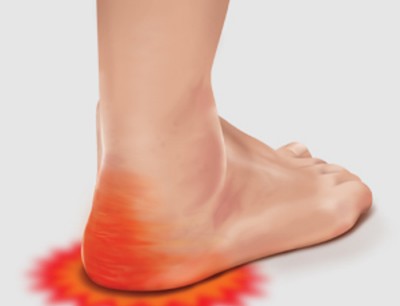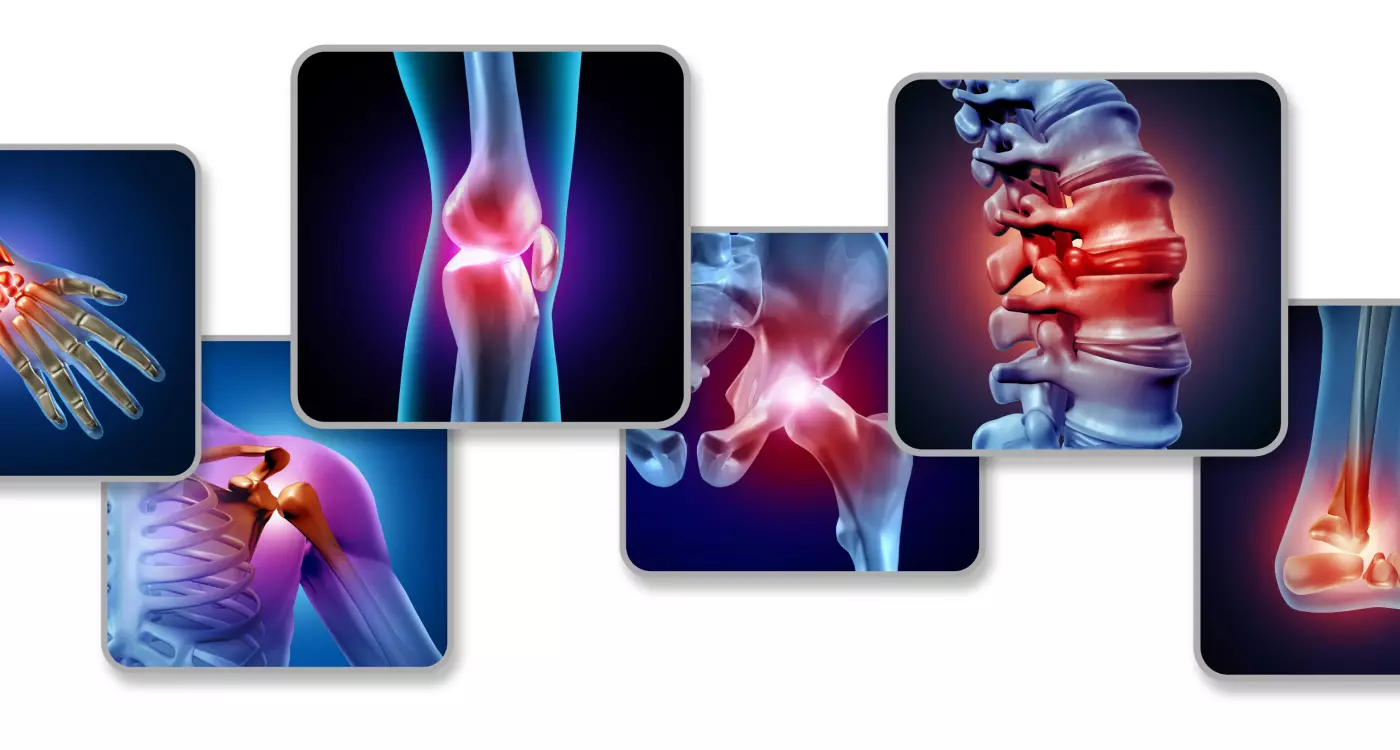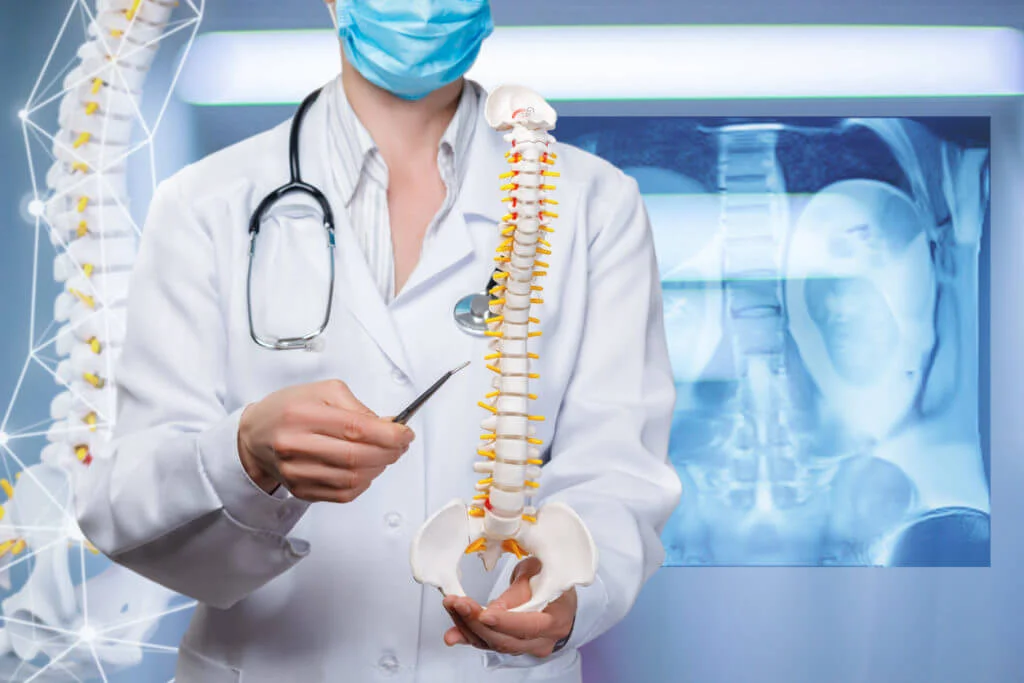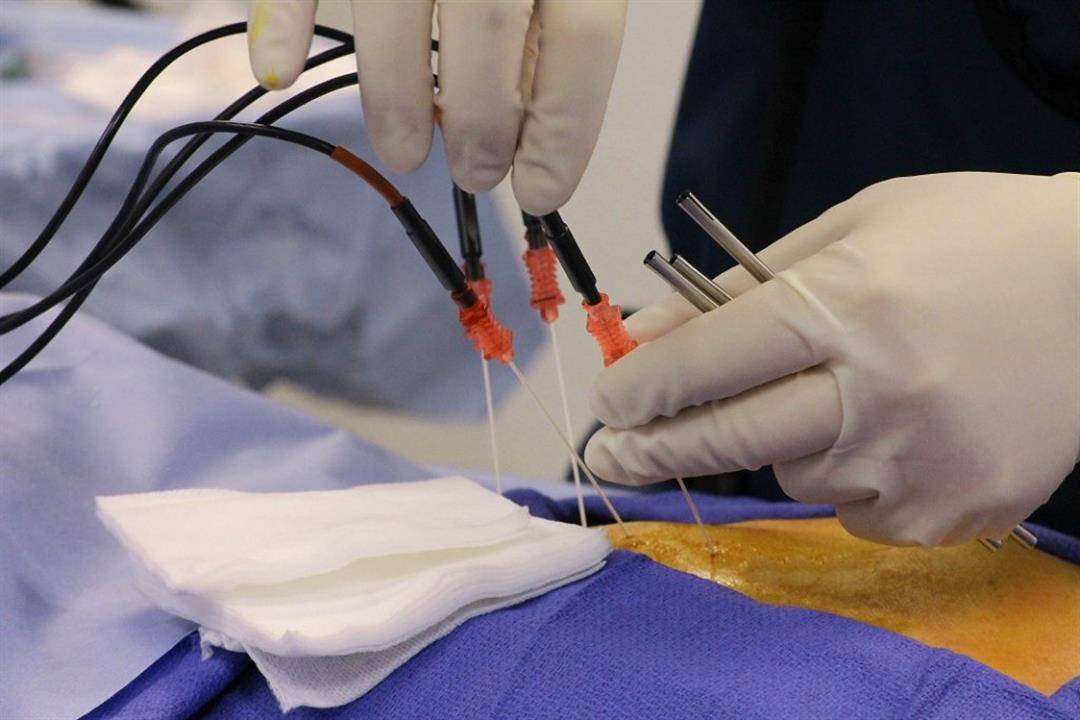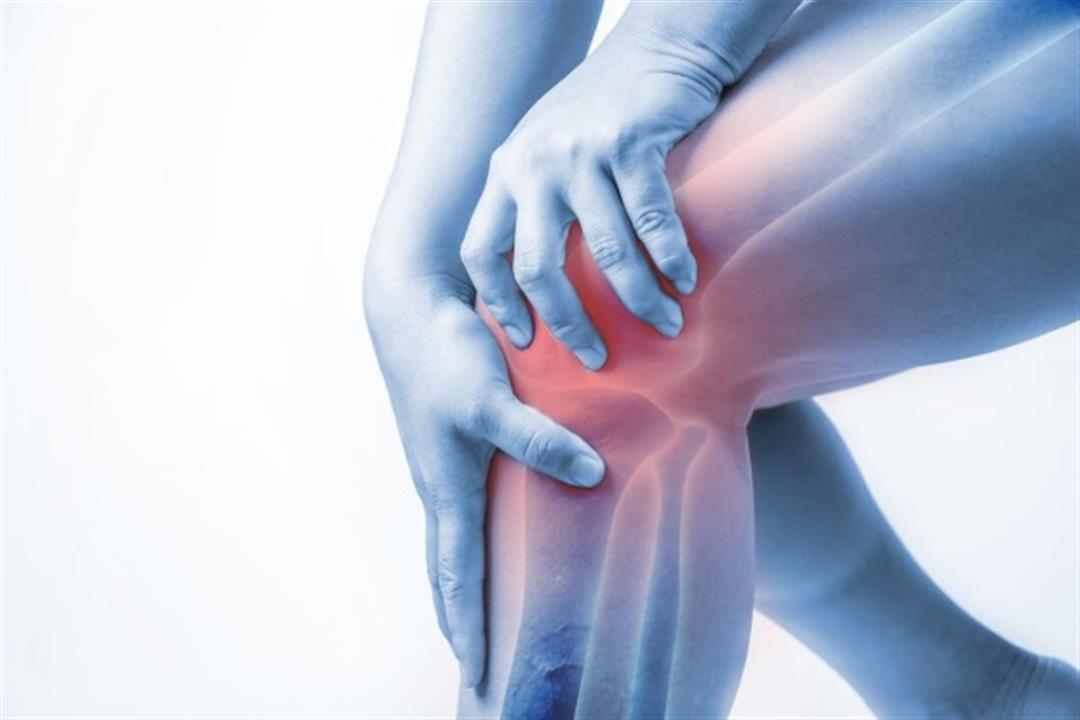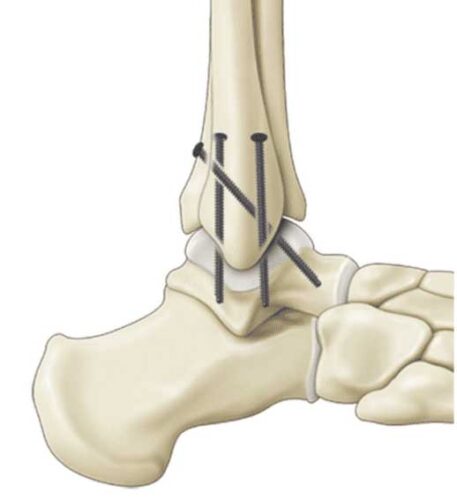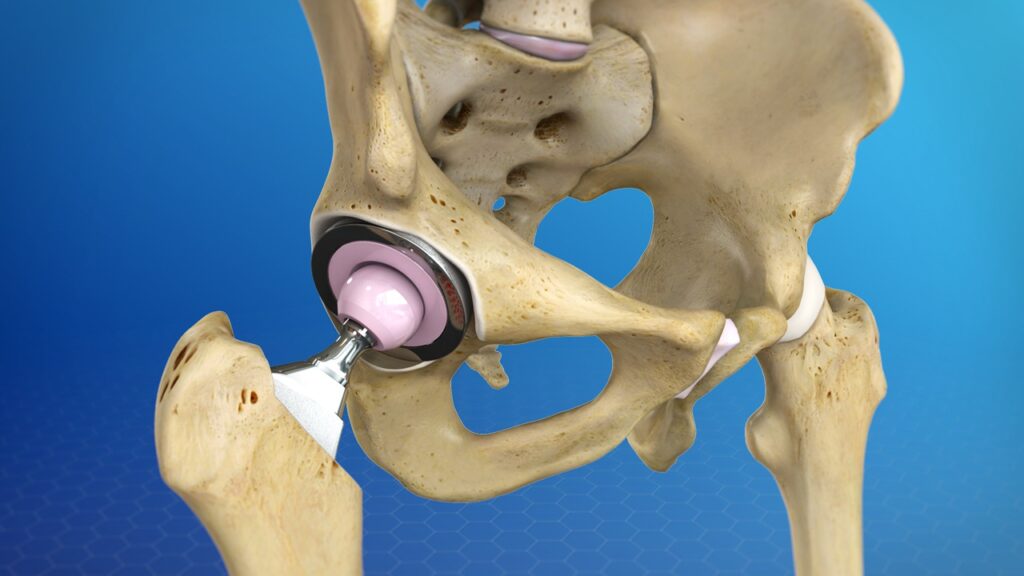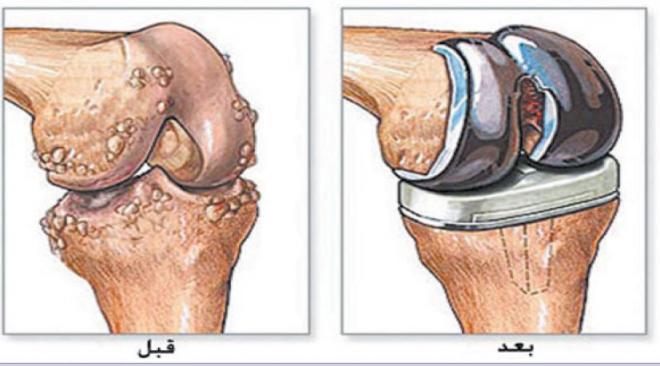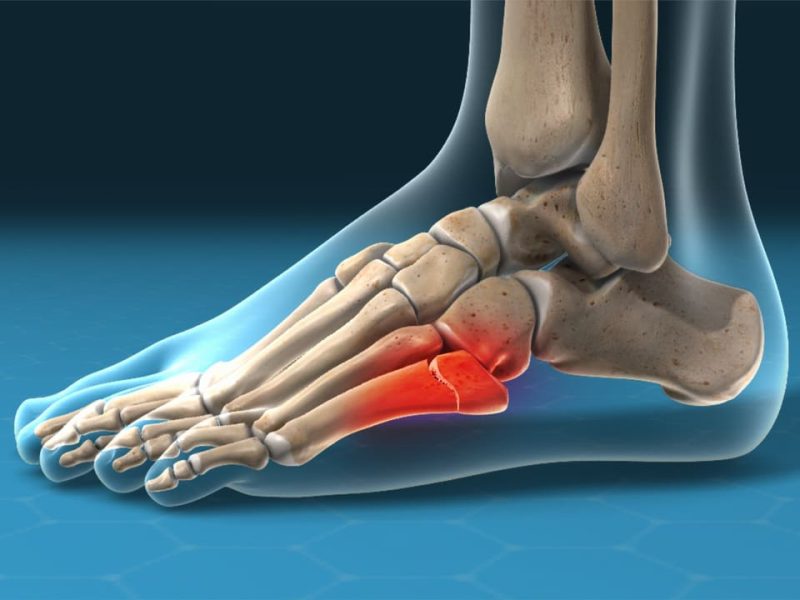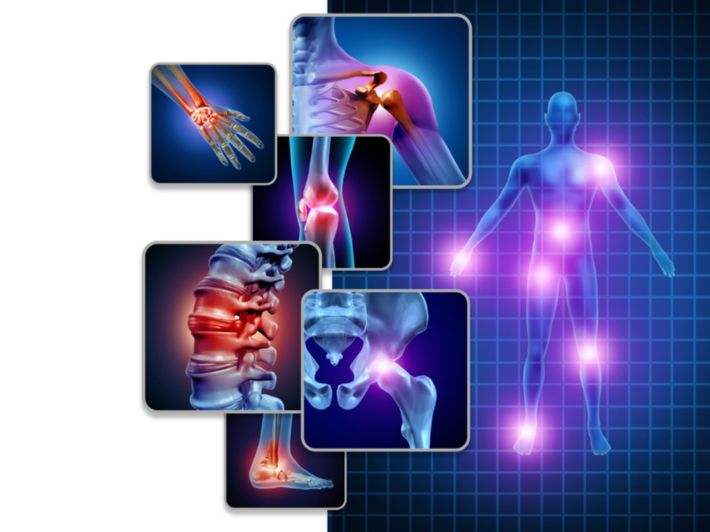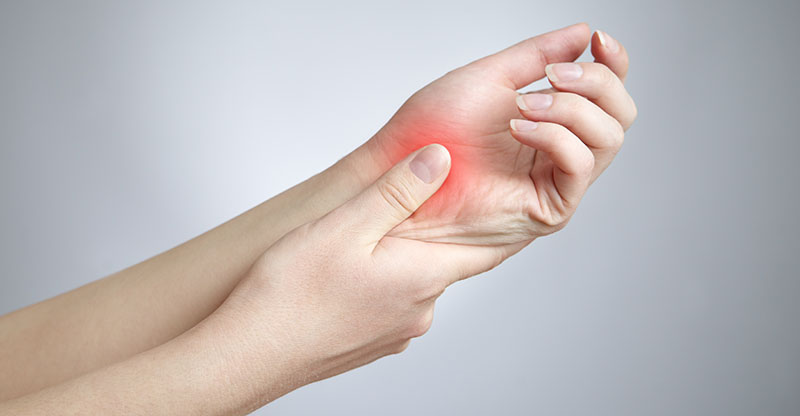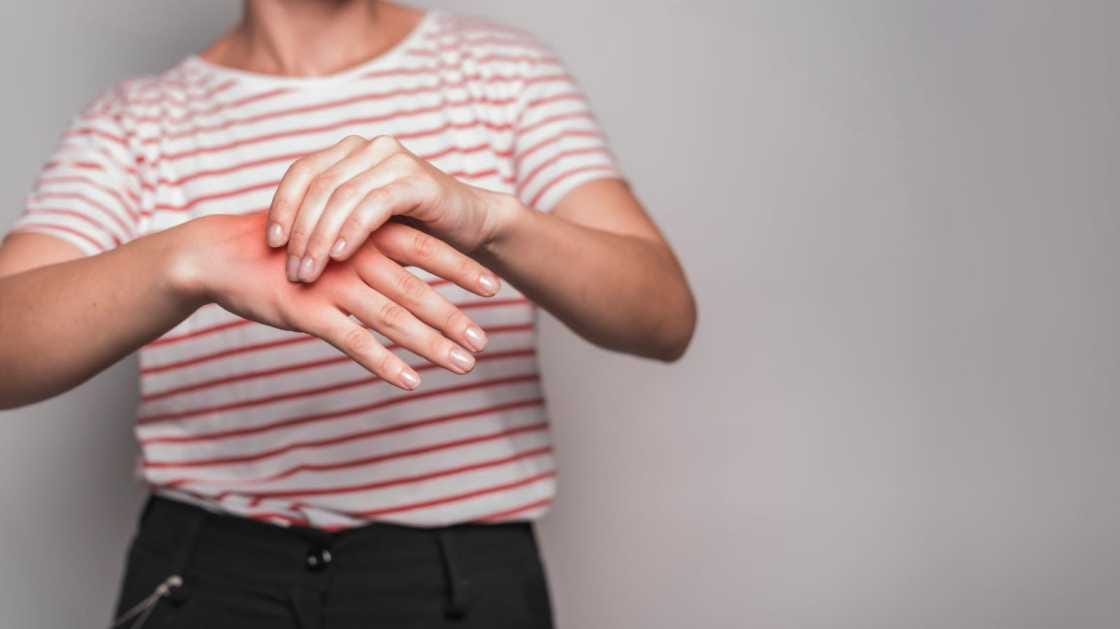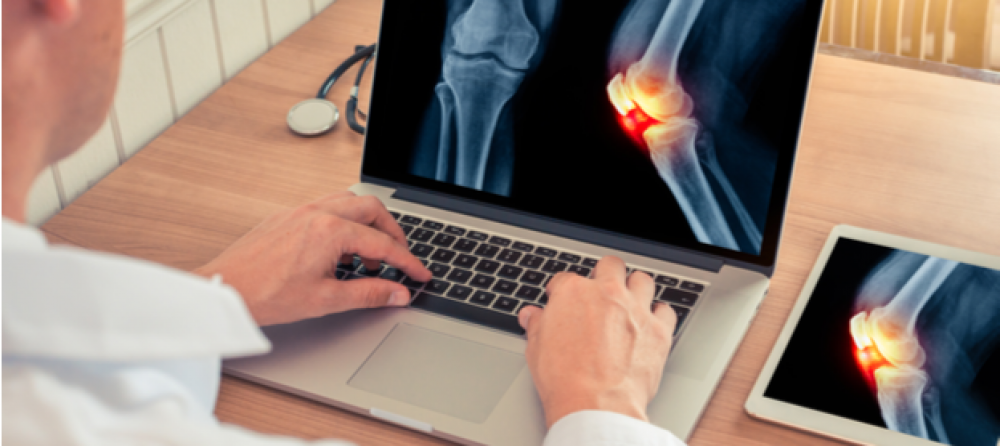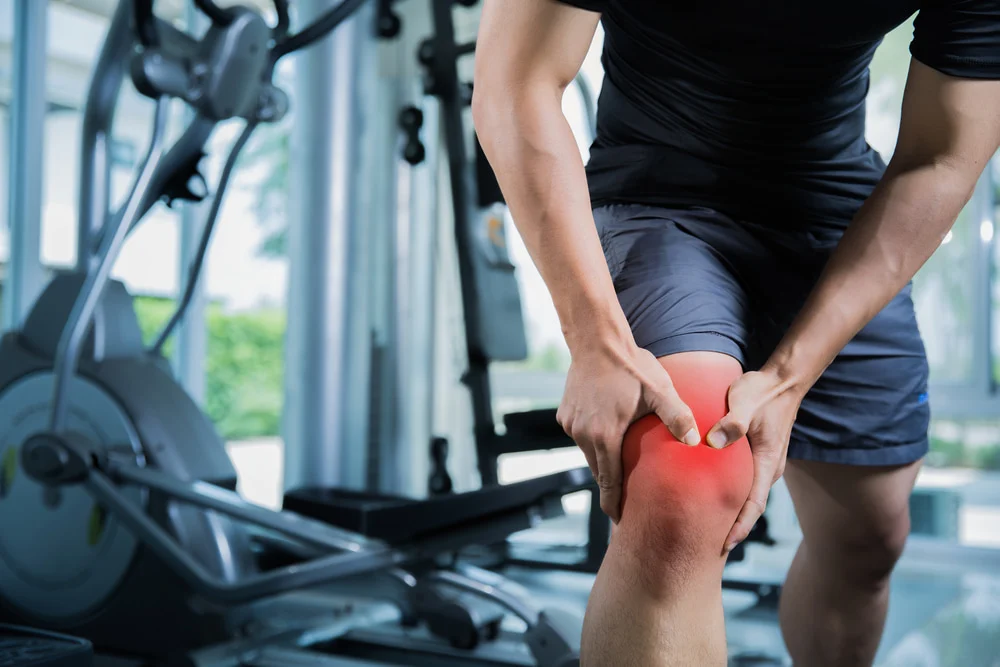Complete Treatment of Knee Osteoarthritis with Herbs: Causes, Symptoms, and More!
Permanent treatment of knee osteoarthritis with herbs, some people believe that alternative medicine and natural herbs play a big role in getting rid of knee pain and overcoming osteoarthritis, and to know the validity of these beliefs, we advise you to follow this article to also learn about the causes of knee osteoarthritis, its symptoms, and the effective treatment for it.
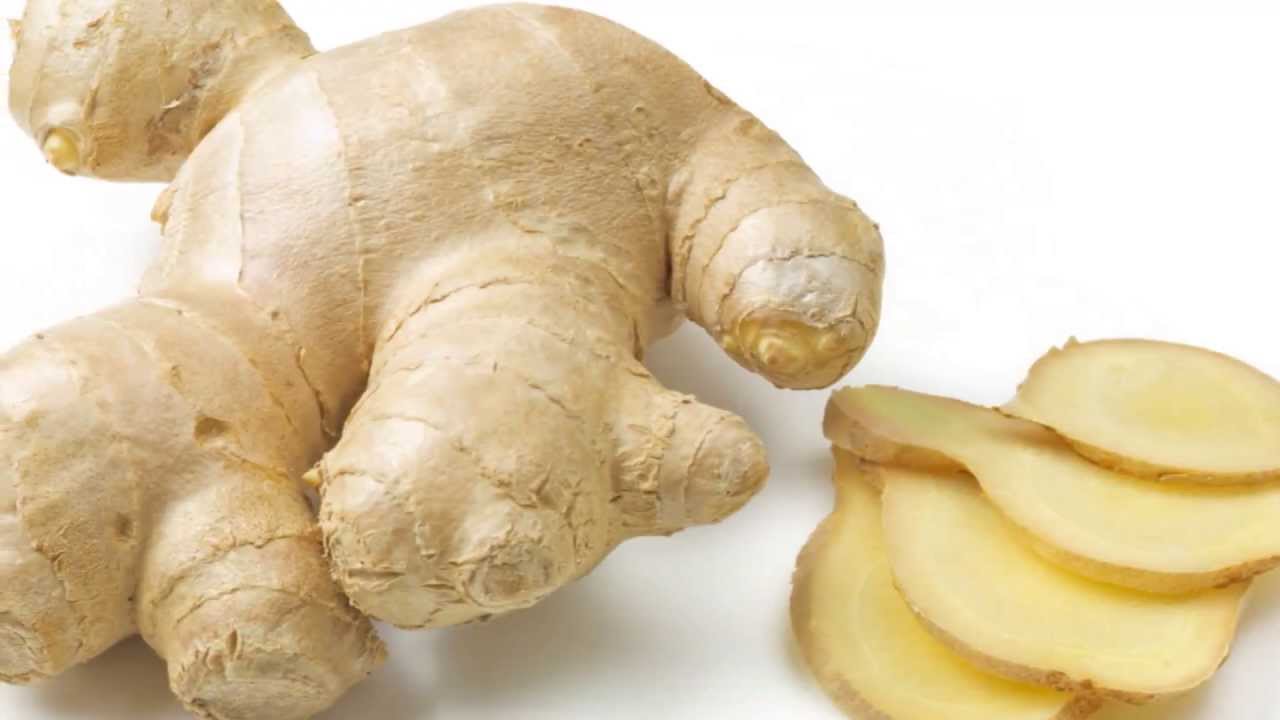
Permanent treatment of knee osteoarthritis with herbs
Knee osteoarthritis is one of the common health problems that many suffer from all over the world. And although there is no definitive cure for this problem, there are some herbs that are believed to contribute to alleviating the symptoms of knee osteoarthritis and improving its condition. In this article, we will shed light on some effective herbs, which are as follows:
1. Fenugreek:
Fenugreek is one of the ancient medicinal herbs known for its multiple health benefits. Fenugreek helps limit the inflammation caused by knee osteoarthritis, and it also increases bone density and protects it from fractures. It is recommended to take ground or dried fenugreek seeds in a cup of hot milk once a day to benefit from its health benefits.
2. Ginger:
Ginger has been a spice and food flavoring for a long time, and it enjoys great fame for its multiple health uses. Ginger is drunk in the form of a decoction for its disinfecting uses for the throat and respiratory system, and it is believed to have a soothing effect on stress and helps relieve muscle spasms and reduce the pain caused by knee osteoarthritis and joints in general.
3. Lavender oil:
Lavender oil is one of the famous and well-known essential oils with many benefits for health and well-being. Lavender oil is believed to have anti-inflammatory and pain-relieving properties, which contributes to alleviating the symptoms of knee osteoarthritis and soothing the associated pain. Lavender oil can be used by massaging it topically on the affected knee area to benefit from its benefits.
Get immediate relief and relaxation with the services of Dr. Amr Amal in the permanent treatment of knee osteoarthritis.
What are the causes of knee osteoarthritis?
- Joint inflammation and erosion of the smooth joint surface: Knee osteoarthritis affects people due to joint inflammation and erosion of the smooth joint surface of the bones that make up the joint. These processes cause patients to experience chronic pain that prevents them from moving and performing daily activities normally.
- Gradual wear of cartilage: Knee osteoarthritis is a condition that affects the knee joint due to the gradual wear of the cartilage that covers the joint. This wear leads to the loss of the necessary cushion to absorb shocks and maintain a smooth and suitable joint surface for movement.
- Genetic factors: Some cases of knee osteoarthritis may be hereditary, as some people have genetic factors that increase the likelihood of its development. Therefore, people who have relatives suffering from knee osteoarthritis may be more prone to developing it.
- Personal factors: Personal factors include several variables such as age, gender, and weight. For example, aging is an important factor in increasing the likelihood of developing knee osteoarthritis, as wear and tear increases with age. Women are also more prone to knee osteoarthritis compared to men. In addition, excess weight is a contributing factor in increasing the pressure on the knee and its wear.
- Previous knee injuries: A previous injury to the knee, especially a cruciate ligament tear and previous joint surgery, is a contributing factor in increasing the likelihood of developing knee osteoarthritis in the future.
- Incorrect habits: There are some bad habits that cause increased pressure on the cartilage surface of the knee, leading to it cracking and tearing. The most prominent of these habits are sitting in incorrect positions such as cross-legged or kneeling for long periods without changing position.
Symptoms of knee osteoarthritis
The knee is one of the important joints in the human body, but as we age, the knee joints may begin to indicate this troublesome condition known as knee osteoarthritis. It is the difficulty in moving the knee joint that results from several factors, such as excess weight and exposure to knee injuries. It may also occur due to being affected by autoimmune diseases.
The symptoms of knee osteoarthritis usually appear gradually, and it affects one joint or a few joints initially. Here are the most important symptoms that may indicate the presence of osteoarthritis in the knee:
- Knee pain:
Pain is one of the main symptoms of knee osteoarthritis. The pain can vary in intensity and may be accompanied by a feeling of stiffness and restriction in knee movement. The pain may increase during physical activity or after prolonged and continuous effort. - Cracking sound:
You may notice a cracking sound with the movement of the affected knee joint. This cracking occurs as a result of the friction between the eroded bones and the loss of balance in the joint components. - Swelling and inflammation:
The affected knee joint may swell, causing painful swelling. This swelling may be persistent or recur frequently. - Difficulty moving the knee:
You may experience difficulty moving the affected knee, which affects your ability to walk or perform daily activities comfortably. There may be stiffness or restriction in knee movement. - Pallor and redness:
The person with knee osteoarthritis may notice pallor or redness in the area around the affected knee. This is a symptom of the inflammation that may accompany knee osteoarthritis. - Muscle weakness:
Knee osteoarthritis may be accompanied by weakness of the thigh and leg muscles associated with the joint. This muscle weakness can lead to decreased stability and increased fatigue and tiredness during movement.
Natural treatment for knee osteoarthritis
When a person suffers from knee osteoarthritis, they can turn to physical therapy as an initial option to relieve pain and increase joint mobility, and we present the natural treatment methods used for the knee as follows:
1. Knee massage: Gently massaging the knee can help relieve tension and improve the blood circulation around the joint. It is preferable to use olive oil or lavender oil during the massage and avoid excessive pressure on the joint.
2. Strengthening exercises: Practicing appropriate physical exercises can help strengthen the muscles around the knee and improve joint stability. These exercises include muscle-building exercises such as squats and jumps, and flexible stretching exercises to improve joint flexibility.
3. Application of heat and cold: Heat and cold can be used alternately to relieve pain and reduce swelling in the knee. Hot compresses can be placed on the knee for 15-20 minutes, followed by an ice pack for 10-15 minutes.
4. Hyaluronic acid: The use of hyaluronic acid injections can help improve joint friction and reduce pain. This compound is injected directly into the joint and it is recommended to have this injection done by a physical therapist.
5. Supplements: There are some natural supplements that can help alleviate the symptoms of knee osteoarthritis, such as supplements containing glucosamine and chondroitin sulfate. These substances are believed to promote cartilage health and help strengthen and nourish the joints.
Do not forget to consult a doctor before using any type of natural treatment, as specialized medical advice can be necessary to determine the appropriate treatment for the person’s condition. Other options for treating knee osteoarthritis include pain relieving medications and surgical treatment in advanced cases, so let Dr. Amr Amal provide you with comfort and facilitation in every knee osteoarthritis treatment session.

Surgical treatment of knee osteoarthritis
Surgical treatment of knee osteoarthritis is an option for advanced cases that have not responded to other treatments such as medications, physical therapy, or injections. Surgery may include several types, such as joint arthroscopy, where the joint is cleaned of damaged parts or inflamed tissues, or corrective surgery to redistribute the body’s weight on the knee in a more balanced way.
In the most severe cases, doctors may resort to replacing the joint with an artificial joint in a procedure known as total or partial knee replacement. These procedures can significantly reduce pain and improve the quality of life of patients, enabling them to regain their mobility and perform their daily activities better. However, the decision to perform surgery depends on many factors, including the patient’s age, activity level, and general health condition.
What is the best medication for treating knee osteoarthritis?
This is a question that preoccupies many people who suffer from this painful condition. The knee bears a great burden in our daily lives and is considered one of the most susceptible joints to wear and tear. Since healthy joints are essential for normal movement and daily activity, knee osteoarthritis can be a source of severe discomfort and pain. Although there are many options available for treating knee osteoarthritis, a doctor should be consulted initially to determine the most appropriate treatment for the individual case.
Here is a list of the most prominent medications that can be used to treat knee osteoarthritis:
- Non-steroidal anti-inflammatory drugs (NSAIDs): These medications are the first choice in relieving pain and inflammation in the knee. They work to reduce inflammation and relieve the pain associated with osteoarthritis. Examples of these drugs include ibuprofen and naproxen.
- Topical non-steroidal anti-inflammatory drugs: These medications can be used as creams or ointments to relieve pain and inflammation in the knee. These substances work through topical absorption and pain relief. Some of these preparations may contain soothing agents such as camphor and menthol.
- Glucosamine supplements: Taking nutritional supplements containing glucosamine can help improve the overall health of the joints and alleviate pain and improve mobility. Glucosamine works to improve the composition of the cartilaginous material in the knee and improve its function.
- Viscosupplementation injections: Viscosupplementation injections can be used to treat knee osteoarthritis. These injections inject a fluid containing hyaluronic acid into the affected joint. The balance between the fluid and the cartilage in the knee is improved, and movement is improved and pain is reduced.
- Physical therapy: The doctor may recommend physical therapy sessions to promote improved mobility and reduced pain in the affected knee. These sessions include strengthening, stretching and balancing exercises that target the muscles around the knee.
Get ready for a life full of energy and activity with the specialized treatments for knee osteoarthritis from Dr. Amr Amal.
Healthy sitting for patients with knee osteoarthritis
Proper sitting for patients with knee osteoarthritis is crucial in alleviating pain and improving the general condition of the joint. The focus should be on sitting in a squatting position, as this requires a comfortable sitting position to provide appropriate support for the knees. In addition, here are some important tips for proper sitting:
- Choose a comfortable chair that provides proper support for the back and knees.
- The body should be in an upright position when the knees are raised.
- It is essential to avoid sitting for long periods without movement, as the knees should be exercised regularly to strengthen the muscles and joints.
- It is preferable to use spring-filled cushions or padded cushions to provide support and reduce pressure on the affected knee.
- It is advised to avoid excessive bending or straightening of the knee during sitting.
- It is best to avoid long sitting on the floor or hard surfaces, and a comfortable mat can be used to provide spacing between the knees and the ground.
- Distributing weight equally on both knees and avoiding excessive loading on one of them is recommended.
- Proper sitting in a suitable position for the knees is one of the important methods to alleviate the symptoms of knee osteoarthritis and improve the overall quality of life for the patient. The treating doctor should be consulted before adopting any changes in the sitting position to ensure an appropriate response to the patient’s needs.
Does walking help treat knee osteoarthritis?
It is clear that walking can be an effective way to treat knee osteoarthritis. Walking regularly and consistently for 20 to 35 minutes per day can improve the condition of the bones in the knees and alleviate the pain of osteoarthritis.
Exercise in general is the best way to relieve the pain of osteoarthritis, and walking is one of the simple and effective activities in achieving this. Walking improves the strength of the muscles around the knee and protects it, thus reducing the risk of falling during walking and enhancing the stability of the knee.
However, many women are affected by calcium deficiency due to childbirth and poor nutrition, as they lose a percentage of calcium during pregnancy and breastfeeding. In addition, the overall muscle weakness in women is greater than in men, which is also a factor that contributes to calcium deficiency and knee osteoarthritis.
It is essential to treat calcium deficiency in the body by consuming calcium-rich foods and promoting the maintenance of bone health. Blood tests should also be performed to determine the calcium level, and if there is a deficiency, the patient should follow the doctor’s advice to compensate for this deficiency and prevent bone problems such as knee osteoarthritis. Therefore, take a step towards healing with Dr. Amr Amal and his specialized team in the permanent treatment of knee osteoarthritis.
Does Prostration Increase Knee Osteoarthritis?
The answer to the question “Does prostration increase knee osteoarthritis?” depends on the patient’s condition and the recommendations of the treating doctor. Knee osteoarthritis is a common condition among older adults, characterized by severe wear and tear of the knee’s cushioning cartilage, leading to difficulty in movement.
Muslims suffering from knee osteoarthritis face challenges in performing prayers, especially in their prostration. In this case, the affected Muslim can perform prayers standing, then kneel and adjust, and then prostrate in a comfortable position for the knee to avoid further pressure and irritation on the affected joint.
Doctors also recommend consulting the treating doctor before performing prayers for patients with knee osteoarthritis, as the doctor needs to assess the patient’s condition and determine whether the patient can prostrate or not. The doctor may recommend some modifications in the prostration position or the use of a cushion to relieve pressure on the affected knee.
It’s worth mentioning that prostration has several health benefits, including promoting blood circulation and strengthening muscles. Therefore, the patient should continue praying and prostrating after consulting the treating doctor and making necessary modifications to relieve pressure on the affected knee. For more details on the impact of prostration on knee osteoarthritis, read this article.
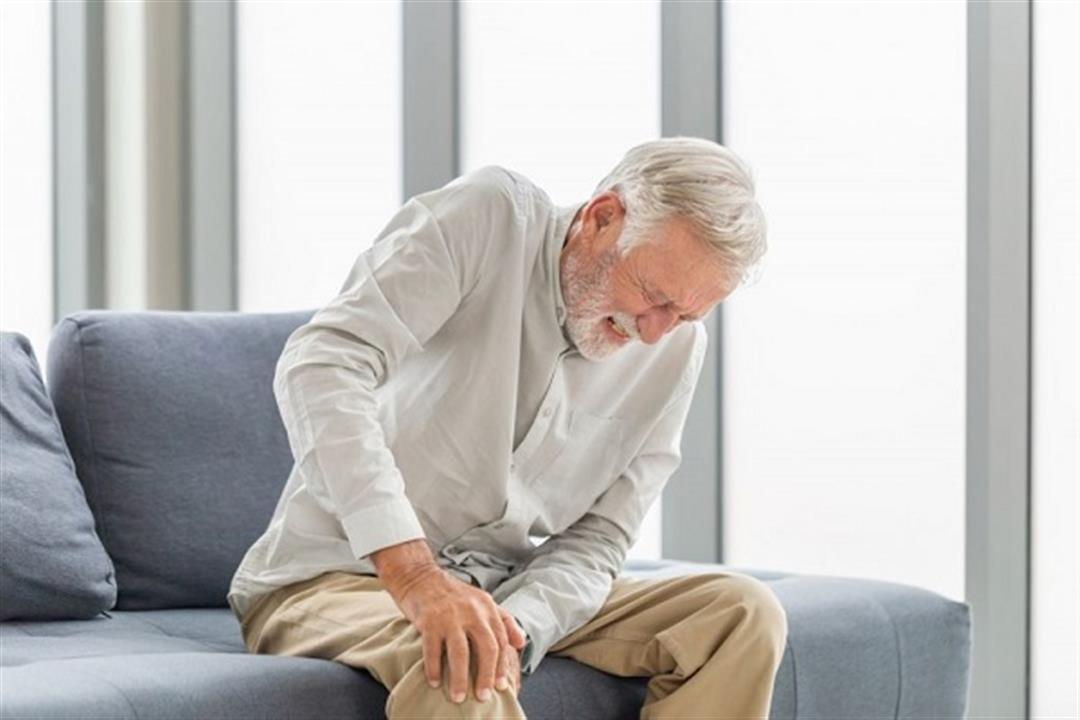
Does Calcium Deficiency Cause Knee Osteoarthritis?
Calcium deficiency in the body is a health problem that affects bone health in general, and one of the issues that can result from this problem is knee osteoarthritis. Knee osteoarthritis is a condition where the patient experiences difficulty in movement and walking due to wear and tear of the joint’s cartilage. Calcium deficiency leads to bone weakness and deterioration of the overall bone condition, increasing the likelihood of joint diseases such as knee osteoarthritis.
Calcium deficiency in the blood manifests through several symptoms on affected individuals, including tremors in the hands and feet. These symptoms serve as warning signs of calcium deficiency, and the patient should visit the doctor for diagnosis and proper treatment.
Many women are affected by calcium deficiency due to childbirth and poor nutrition, as they lose calcium during pregnancy and breastfeeding. Additionally, the overall muscle weakness in women is higher than that in men, which is also a factor contributing to calcium deficiency and knee osteoarthritis.
It is essential to treat calcium deficiency in the body by consuming calcium-rich foods and enhancing bone health. Blood tests are necessary to determine calcium levels, and if there is a deficiency, the patient should follow the doctor’s advice to compensate for this deficiency and prevent bone problems like knee osteoarthritis. Take a step towards healing with Dr. Amr Amal and his specialized team in permanently treating knee osteoarthritis.
If you would like to learn more about calcium deficiency and its sources, click here.
Who is the best orthopedic doctor for treating knee osteoarthritis in Cairo?
Among the common diseases that many suffer from in Egypt is knee osteoarthritis. To treat this problem, many are looking for the best specialized doctors in the field of bones, especially in the specialty of the knee.
Dr. Amr Amal is among the best distinguished doctors in the treatment of knee osteoarthritis in Cairo, as he enjoys an excellent reputation in the field of sports medicine and orthopedic surgery. Dr. Amr is appreciated by his patients and colleagues for his extensive experience and comprehensive approach to treatment, which includes the latest surgical and therapeutic techniques.
He is praised for his ability to listen carefully to patients’ concerns and provide customized treatment plans that take into account their individual needs and goals. Dr. Amr Amal is committed to providing the highest levels of medical care, which makes him a trusted choice for those seeking effective treatment for knee osteoarthritis in Cairo.


